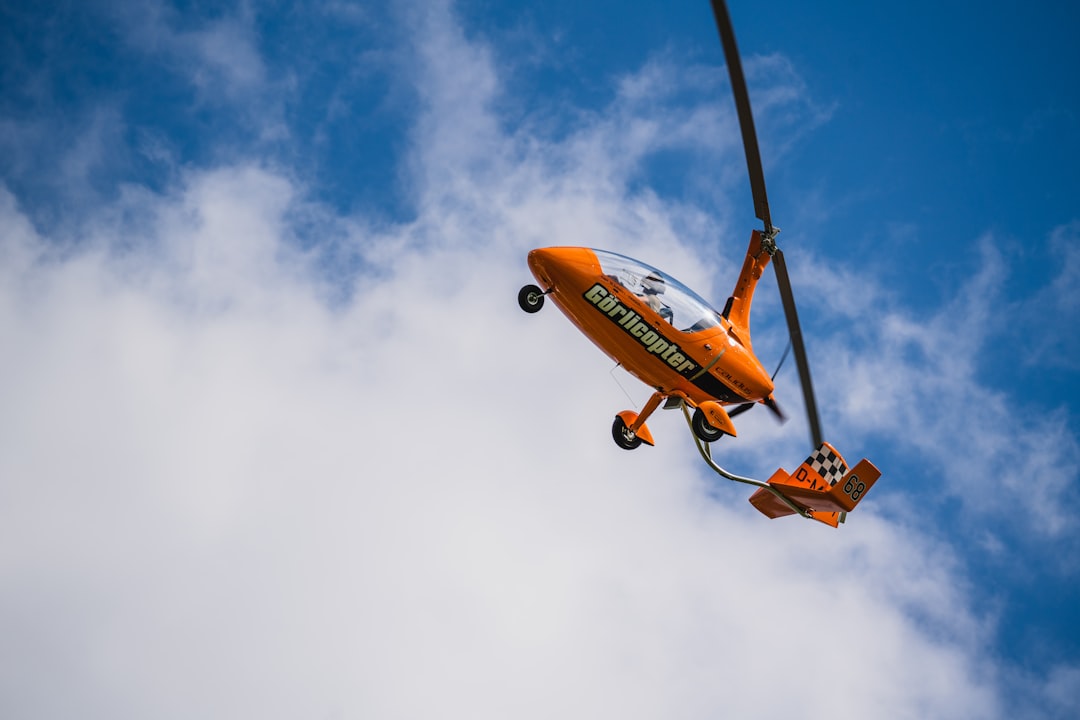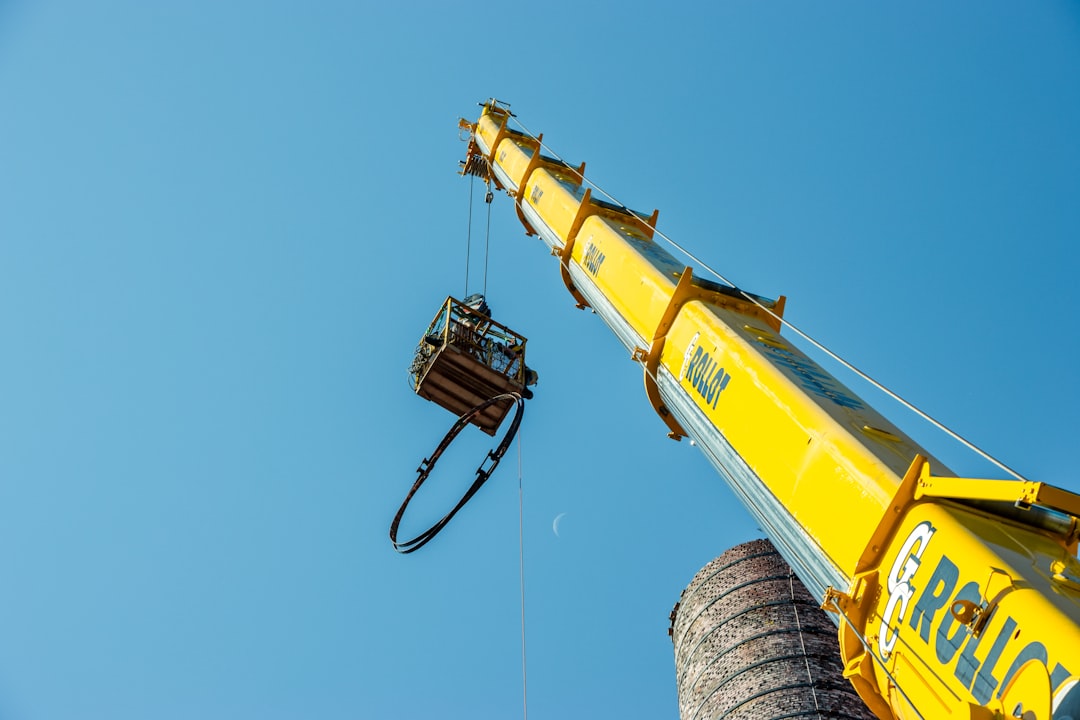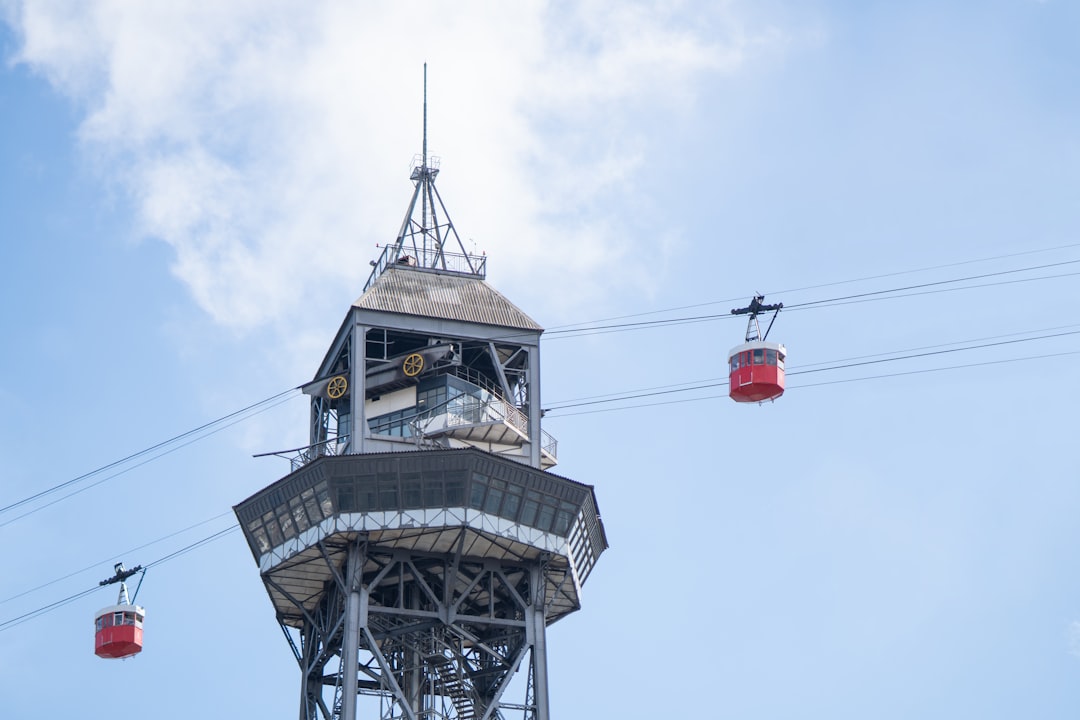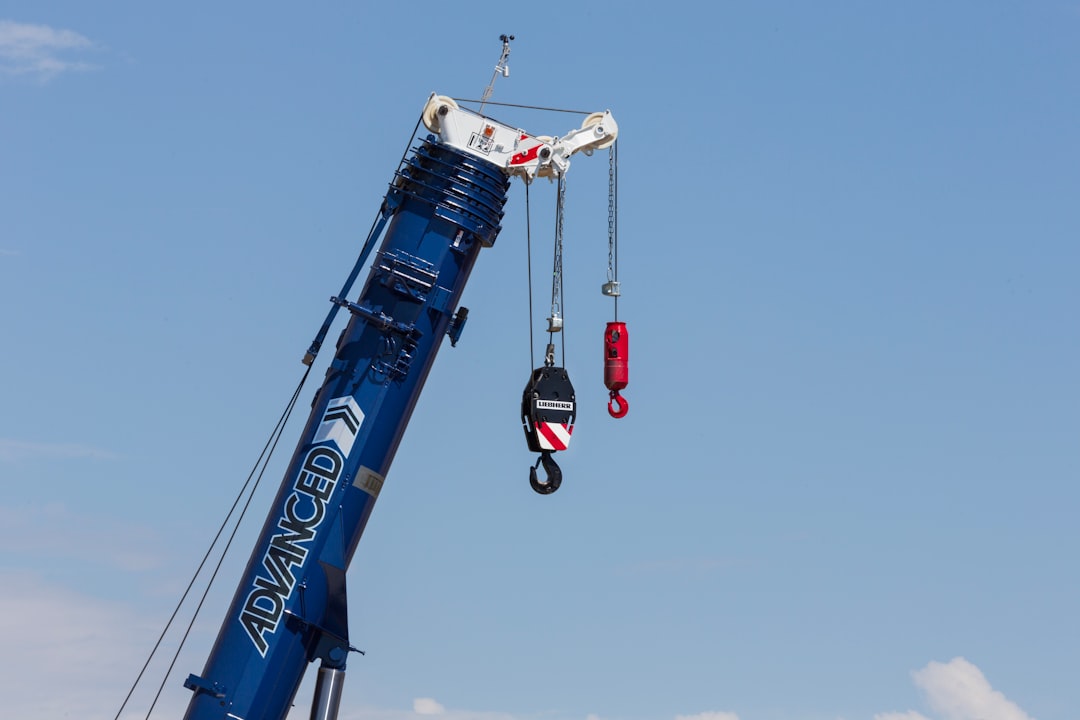

Engage prospects with a scan and streamline customer engagement with FREE QR code marketing tools by Sona – no strings attached!
Create a Free QR CodeFree consultation

No commitment

Engage prospects with a scan and streamline customer engagement with FREE QR code marketing tools by Sona – no strings attached!
Create a Free QR CodeFree consultation

No commitment
In today’s digitally driven world, QR codes have evolved from a novelty to a strategic powerhouse for bridging offline engagement with online action. For aerial lift repair services, they offer a fast, app-free way to give operators, site managers, and fleet owners instant access to support, documentation, and scheduling in the exact moment of need.
When deployed thoughtfully, QR codes turn every physical interaction into a measurable digital touchpoint. A scan on a lift decal can create a service ticket, launch a digital inspection, or play a safety video; a scan on an invoice can trigger rebooking or a feedback request. This article shows how aerial lift repair teams can use QR codes to enable seamless access, reduce downtime, automate compliance, and attribute real revenue to field engagement.

Aerial lift repair providers confront the challenge of fragmented data capture at field touchpoints. Service tags, inspection logs, and manual checklists often become information silos, obscuring real-time customer needs and leading to missed opportunities. Making every jobsite interaction scannable with QR codes modernizes workflows, eliminates manual data entry, and ensures each scan captures actionable lead or service signals linked to your systems.
Start by identifying the analog friction points that slow your teams down: paper inspection sheets, phone-based triage, or untraceable voicemail requests. Replace these with QR-enabled workflows that capture context like unit ID, location, and issue category. Dynamic QR codes managed in a platform like Sona QR allow you to update destinations without reprinting. The same decal or poster can power different actions throughout the repair lifecycle.
Successful programs define clear outcomes. For example, aim to reduce average time-to-schedule by 20 percent, increase inspection completion rates by 30 percent, and attribute at least 40 percent of trade show leads to QR-driven interactions. With defined KPIs and a consistent deployment plan, QR codes become a dependable engine for access and accountability.

A major pain point for aerial lift repair services is responding quickly when equipment needs urgent attention. Legacy processes like call-ins or manual ticketing add downtime, and lack of visibility into who engages with your materials means missed leads or service requests. QR codes compress the distance between problem and resolution: scans on equipment, safety signage, or invoices push people directly into the next best action.
Speed and simplicity drive adoption. Operators do not want to download an app at a busy site. Technicians need to get information quickly while wearing gloves and working in variable weather. QR codes meet both needs: a scan launches exactly the right content or form, regardless of device or OS. Dynamic QR codes also let you update content as parts availability changes or seasonal maintenance campaigns launch.
Think about the physical materials you already produce. Inspection cards, unit stickers, bill inserts, safety signage, and trade show brochures become interactive when paired with QR codes. Instead of hoping a supervisor remembers to call later, the scan records intent, captures context, and starts the workflow immediately.

QR codes support several formats, and the right choice depends on your workflow and environment. Aerial lift repair providers benefit most from formats that simplify service requests, drive direct contact, and standardize data capture.
Start by mapping use cases to outcomes. If your goal is faster scheduling, a Web link to a pre-filled service form is ideal. If your goal is faster technician contact, a vCard accelerates introductions. For triaging issues quickly, SMS and Email QR codes pre-fill messages with model and serial number so technicians have the context required to respond.
In this vertical, Web links, forms, and SMS or Email flows typically deliver the highest impact because they connect directly to job-critical actions. Reserve app downloads for organizations that already have strong app adoption, and use vCards to strengthen local technician relationships.

Growth hinges on reducing friction at high-value touchpoints. In aerial lift repair, these touchpoints often occur on equipment, at the jobsite, or during moments that require repeat engagement such as invoicing and scheduled maintenance. Strategic placement ensures scans happen at the exact moments when urgency and intent are highest.
Consider where the cost of delay is most painful: stalled projects, failed inspections, or extended downtime. Then place QR codes that convert those moments into measurable actions. Unique codes per asset or location capture granular performance data, which helps you prioritize investments and outreach.
Prioritize placements by projected business value, not just convenience. A single decal on each lift can produce more revenue and retention impact than dozens of low-intent placements elsewhere.

The most effective use cases reduce downtime, make compliance effortless, and transform otherwise anonymous interactions into data you can act on. Start with workflows that directly affect your core metrics such as time-to-dispatch, inspection completion rate, and repeat service bookings.
Each use case benefits from a clear call to action and simple design. The QR should be visible from common vantage points, scannable from a practical distance, and clearly labeled with the benefit the user will get by scanning.
These use cases compound. For instance, a parts ordering scan can trigger a follow-up message with training content or recommend a service plan, creating a cohesive experience that boosts both satisfaction and lifetime value.
Every scan reveals intent and context. By deploying unique QR codes at different journey stages and across assets, you can segment audiences automatically and personalize follow-up. This moves your marketing from generic blasts to high-precision outreach based on real behavior.
In practice, segment by role, urgency, and equipment type. An operator requesting an emergency dispatch is different from a fleet manager reviewing maintenance logs. A scan on a boom lift decal speaks to different needs than one on a scissor lift. Treat these segments differently inside your CRM and ad platforms.
This approach compounds the value of each scan. Instead of a single interaction, you gain a longitudinal view of interest and need, allowing your team to deliver the right message at the right time and channel.
QR codes connect your offline presence with digital systems across every campaign channel. The same decal that triggers a repair request can link to a different destination during a seasonal inspection push. The same brochure that lives at the counter can drive measurable web traffic, book demos, and route high-intent leads to sales.
A connected strategy improves both conversion rate and revenue attribution. When you know which brochures, events, and fleet assets generate the most scans, you can shift spend toward what works and retire what does not.
QR codes serve as the offline onramp to your digital marketing engine. With a centralized platform like Sona QR, you can manage codes, monitor performance, and sync scan data with your CRM and ad platforms to create a truly closed-loop system.
Misapplied QR deployments can stall adoption or muddy measurement. Firms get the best results when steps address field barriers and align to concrete business goals.
Select a use case that directly addresses a persistent bottleneck. Same-day repair requests from lift decals, for example, tackle delays in urgent support cycles and reduce phone tag. Define the outcome you want, such as cutting average time-to-dispatch by 25 percent or increasing the share of digital requests to 80 percent.
Evaluate effort versus impact. Immediate quick wins include QR-triggered service requests and digital inspections. More advanced plays like QR-powered predictive maintenance recommendations can follow once your data foundation is set.
Dynamic QRs provide flexible destinations and analytics, which makes them ideal for most repair scenarios. Start with dynamic Web links for booking or inspection forms, and use SMS or Email QRs for fast triage.
Reserve static codes for evergreen resources like safety manuals that rarely change. When in doubt, choose dynamic. With Sona QR, you can update destinations, set UTM parameters, and attach campaign metadata without reprinting, which saves money and ensures relevance.
Design for the jobsite. Use durable, weather-proof labels with chemical-resistant lamination. Choose high-contrast colors and a quiet zone around the code. Pair the code with a clear, benefit-driven call to action, such as Scan to request repair now or Scan for today’s inspection checklist.
Test thoroughly. Scan from multiple angles and distances, on various devices, under bright sun and in low light. Validate that forms are mobile friendly, pre-fill as intended, and route to the right team. Involve technicians and operators in testing so the final design reflects real-world use.
Prioritize placements that align with urgency and frequency. Put QRs on equipment near the operator’s station, in check-in areas at the depot, on safety posters in the yard, and on essential documents like invoices and service summaries. For events, place codes at eye level on booth walls and on demo units.
Roll out in phases. Start with one region or fleet segment, gather feedback, then expand. Document placement standards: height from ground, minimum size, required CTA language, and label durability specs to ensure consistency across teams.
Use Sona QR to track scans by time, location, device, and campaign. Monitor conversion rates from scan to form submit, from submit to scheduled job, and from scheduled job to invoice. Identify drop-off points and test new CTAs, destinations, or form flows.
Close the feedback loop. Conduct weekly reviews with field teams to learn where scanning is easy or challenging. Iterate on placement and messaging. Share wins such as reduced time-to-dispatch or higher inspection compliance to reinforce adoption across the organization.
Attribution in field services is notoriously difficult. Many interactions happen offline, and traditional analytics cannot see a phone call sparked by a decal or a brochure. QR analytics solve this problem by making engagement measurable at the source and connecting it to downstream outcomes.
To prove value, measure the entire chain: scan, form submit, job scheduled, job completed, invoice sent, payment received, rebooking created. With Sona QR and Sona.com (Sona is an AI-powered marketing platform for identity resolution and revenue attribution), you can capture scan data, enrich contacts, and connect touchpoints to pipeline and revenue through identity resolution, offline attribution, and multi-touch attribution.
Benchmarks vary by context, but strong programs often see scan-to-form conversion rates between 35 and 60 percent for on-equipment codes and 15 to 30 percent for event signage. Use these as starting points; then optimize your CTAs and placements to exceed them.
Success depends on consistent execution across media, teams, and workflows. The best programs remove ambiguity, make scans beneficial, and connect outcomes to clear KPIs. Focus on education, automation, and testing to sustain momentum.
Design standards matter. Define minimum sizes, quiet zones, and CTA language for different surfaces, and maintain a visual hierarchy that makes the code easy to find under real conditions. Pair every QR with a clear promise of value so operators know exactly what they get when they scan.
Start creating QR codes for free. Create dynamic codes with UTM tagging, and connect to your CRM to automate follow-up from day one.
Companies with slow service cycles and weak trade show follow-up have improved dramatically by integrating QR workflows. One regional provider reduced repair turnaround by 27 percent after adding dynamic QRs to fleet decals that trigger digital job tickets. The tickets pre-fill model and serial number, attach photos, and route to dispatch instantly. Visibility into scan patterns also surfaced frequent parts failures, informing preventive maintenance schedules that cut repeat incidents.
Trade show engagement improved for another firm that placed QRs on demo lifts and booth signage. Each code was tagged by location and asset so scans built segmented lists. Post-show, the team sent targeted emails with spec sheets and financing options tied to the exact models viewed. The result was a 42 percent increase in qualified follow-up meetings and a 19 percent lift in conversion to quotes.
A rental-focused repair shop embedded QRs into invoice footers and rental contracts to authorize repairs faster. Scanning opened a mobile approval form with cost thresholds and warranty checks, reducing authorization delays from days to hours. Customer satisfaction scores rose, and the shop saw an 18 percent increase in maintenance plan renewals due to well-timed rebooking prompts triggered by scan activity.
Maximizing value requires precision in placement, messaging, and data flow. Codes that lack a clear promise, sit in hard-to-reach areas, or link to outdated pages will go unused. Regular audits and automated workflows boost engagement while keeping content fresh and relevant to the field environment.
Technicians report that real-time scan notifications help them triage and prioritize urgent repairs. Operations leaders highlight the compliance gains from time-stamped inspections and centralized documentation. Sales teams appreciate that QR-generated signals identify upsell moments such as end-of-life parts or high wear components.
QR codes are rapidly evolving from novelty to necessity in aerial lift repair operations, turning static touchpoints into dynamic gateways for engagement, compliance, and revenue growth. By centralizing field interactions and surfacing actionable data, these tools eliminate common sources of missed leads, downtime, and regulatory friction. With a platform like Sona QR and Sona.com, teams can manage codes at scale, attribute scans to revenue, and personalize service in real time. The result is a future-proof operation with greater efficiency, visibility, and customer impact.
QR codes have revolutionized aerial lift repair services by transforming maintenance and customer support into seamless, data-driven processes. Whether it’s enabling instant access to repair manuals, tracking service history, or improving technician efficiency, QR codes replace cumbersome paperwork with quick, mobile-friendly actions that enhance every step of the repair workflow. Imagine technicians scanning a code to instantly pull up detailed repair guides or customers accessing real-time status updates—streamlining operations and boosting satisfaction.
With Sona QR, you can create dynamic, trackable QR codes in seconds that update instantly without reprinting, allowing you to optimize service delivery and measure engagement precisely. Every scan becomes an opportunity to improve turnaround times, reduce errors, and strengthen client relationships. Start for free with Sona QR today and turn every scan into faster repairs, happier customers, and greater business growth.
Look for providers that use modern tools like QR codes to enable seamless access, reduce downtime, automate compliance, and provide measurable engagement linked to your systems.
The article does not specify exact costs for aerial lift repairs but highlights that QR code-enabled workflows can reduce delays and improve cost efficiency.
QR codes provide instant access to support, automate service requests, reduce downtime, improve compliance capture, enable two-way communication, and allow tracking that links engagement to revenue.
The process includes digital inspections via QR codes, quick service requests through scannable forms, parts ordering linked by QR codes, technician communication, and audit-ready compliance logs.
Use QR codes to access daily inspection forms, pre-start checklists, safety videos, and maintenance logs to standardize compliance and reduce misuse incidents.
Best practices include scheduling regular digital inspections, using QR codes for parts ordering and repair requests, training operators with safety SOPs, and maintaining audit-ready documentation.
The article suggests triggering reminders via QR codes for 90-day or annual inspections but does not prescribe a fixed service interval.
Signs include reported errors via QR-enabled emergency triage scans, failed inspections, increased downtime, and operator requests submitted through QR code forms.
Choose providers that offer digital workflows with QR codes for efficient scheduling, transparent repair status, real-time communication, compliance automation, and integrated analytics for better service.
Use Sona QR's trackable codes to improve customer acquisition and engagement today.
Create Your FREE Trackable QR Code in SecondsJoin results-focused teams combining Sona Platform automation with advanced Google Ads strategies to scale lead generation

Connect your existing CRM

Free Account Enrichment

No setup fees
No commitment required

Free consultation

Get a custom Google Ads roadmap for your business






Launch campaigns that generate qualified leads in 30 days or less.
